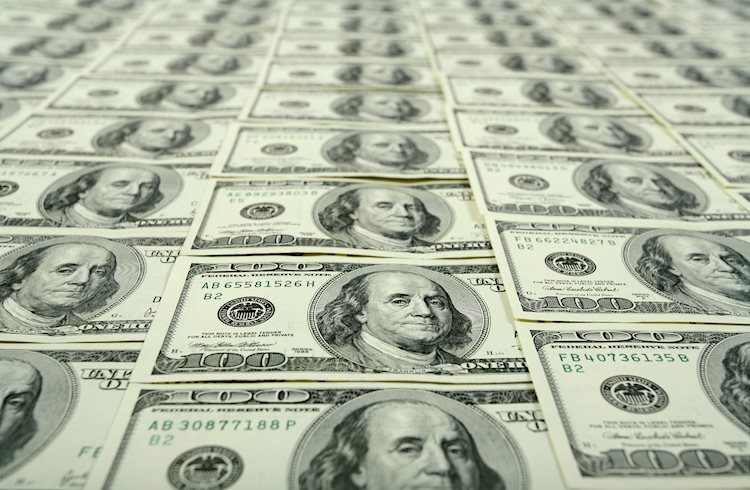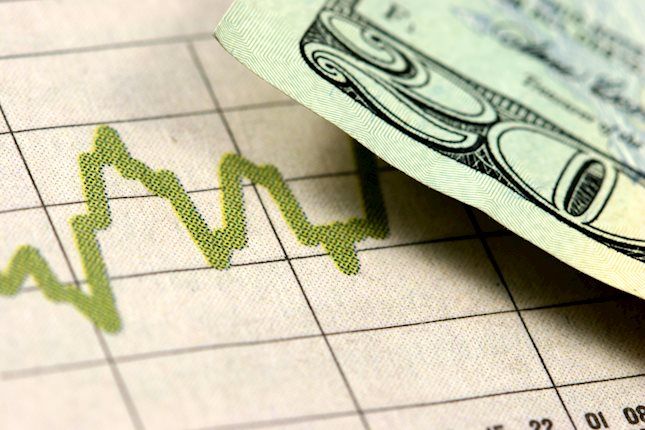US Dollar takes a breather after Wednesday's rally
- DXY hovers near 108.00 on Thursday as buyers seem to be taking a breather.
- Profit-taking emerges after Wednesday’s strong rally.
- Fed’s cautious tone spooks rate-cut optimists, which benefits the USD.
The US Dollar Index (DXY), which tracks the USD's value against a range of currencies, pulls back from its two-year peak following signals from the Federal Reserve (Fed) about fewer interest rate cuts in the future. Federal Open Market Committee (FOMC) members express concerns about inflation continuing into 2025 and take into account possible "Trump-effect" inflationary policies, such as tariffs and reduced labor supply due to deportations.
The DXY stands at 108.00, with that level acting as support. Despite recent advances, traders are taking profits as they consider Chinese economic data and potential stimulus measures that could slow down the US Dollar’s momentum.
Daily digest market movers: US Dollar re-evaluates after hawkish Fed signals
- The two-day Federal Open Market Committee meeting ended with a 25-basis-point cut but fewer projected cuts in 2025, reflecting persistent inflation and caution over future policy moves.
- Updated macro forecasts and the dot plot show upward revisions to growth and inflation, leading to a more hawkish medium-term outlook. The median 2025 policy rate moved to 3.875% from 3.375%, dropping from four projected cuts to two.
- Chair Jerome Powell struck a cautious tone, emphasizing uncertainty and the need for tangible inflation progress. Despite Wednesday’s cut, the Fed signaled that policy easing may slow or pause, keeping the United States rate advantage intact.
- President-elect Donald Trump’s incoming policies loom large, prompting the Fed to consider potential fiscal stimulus impacts on inflation and growth. This “Trump-effect” supports the US Dollar by widening rate differentials.
- On the data front, Initial Jobless Claims improved to 220K, below the 230,000 estimate.
- In addition, the third-quarter Gross Domestic Product expanded by 3.1% annualized versus 2.8% expected, with stable Personal Consumption Expenditures and core PCE measures.
DXY technical outlook: Indicators soften as bulls pause
After Wednesday’s upward movement, technical indicators are easing for the Greenback, allowing the US Dollar Index to take a breather while it remains neutral in the vicinity of 108.30.
Although momentum has waned, the overall picture stays constructive as long as the DXY holds above its 20-day Simple Moving Average (SMA). Without fresh catalysts, the US Dollar may hover within current ranges, awaiting clearer signals before attempting another push higher.
Fed FAQs
Monetary policy in the US is shaped by the Federal Reserve (Fed). The Fed has two mandates: to achieve price stability and foster full employment. Its primary tool to achieve these goals is by adjusting interest rates. When prices are rising too quickly and inflation is above the Fed’s 2% target, it raises interest rates, increasing borrowing costs throughout the economy. This results in a stronger US Dollar (USD) as it makes the US a more attractive place for international investors to park their money. When inflation falls below 2% or the Unemployment Rate is too high, the Fed may lower interest rates to encourage borrowing, which weighs on the Greenback.
The Federal Reserve (Fed) holds eight policy meetings a year, where the Federal Open Market Committee (FOMC) assesses economic conditions and makes monetary policy decisions. The FOMC is attended by twelve Fed officials – the seven members of the Board of Governors, the president of the Federal Reserve Bank of New York, and four of the remaining eleven regional Reserve Bank presidents, who serve one-year terms on a rotating basis.
In extreme situations, the Federal Reserve may resort to a policy named Quantitative Easing (QE). QE is the process by which the Fed substantially increases the flow of credit in a stuck financial system. It is a non-standard policy measure used during crises or when inflation is extremely low. It was the Fed’s weapon of choice during the Great Financial Crisis in 2008. It involves the Fed printing more Dollars and using them to buy high grade bonds from financial institutions. QE usually weakens the US Dollar.
Quantitative tightening (QT) is the reverse process of QE, whereby the Federal Reserve stops buying bonds from financial institutions and does not reinvest the principal from the bonds it holds maturing, to purchase new bonds. It is usually positive for the value of the US Dollar.
Forex News
Keep up with the financial markets, know what's happening and what is affecting the markets with our latest market updates. Analyze market movers, trends and build your trading strategies accordingly.
















